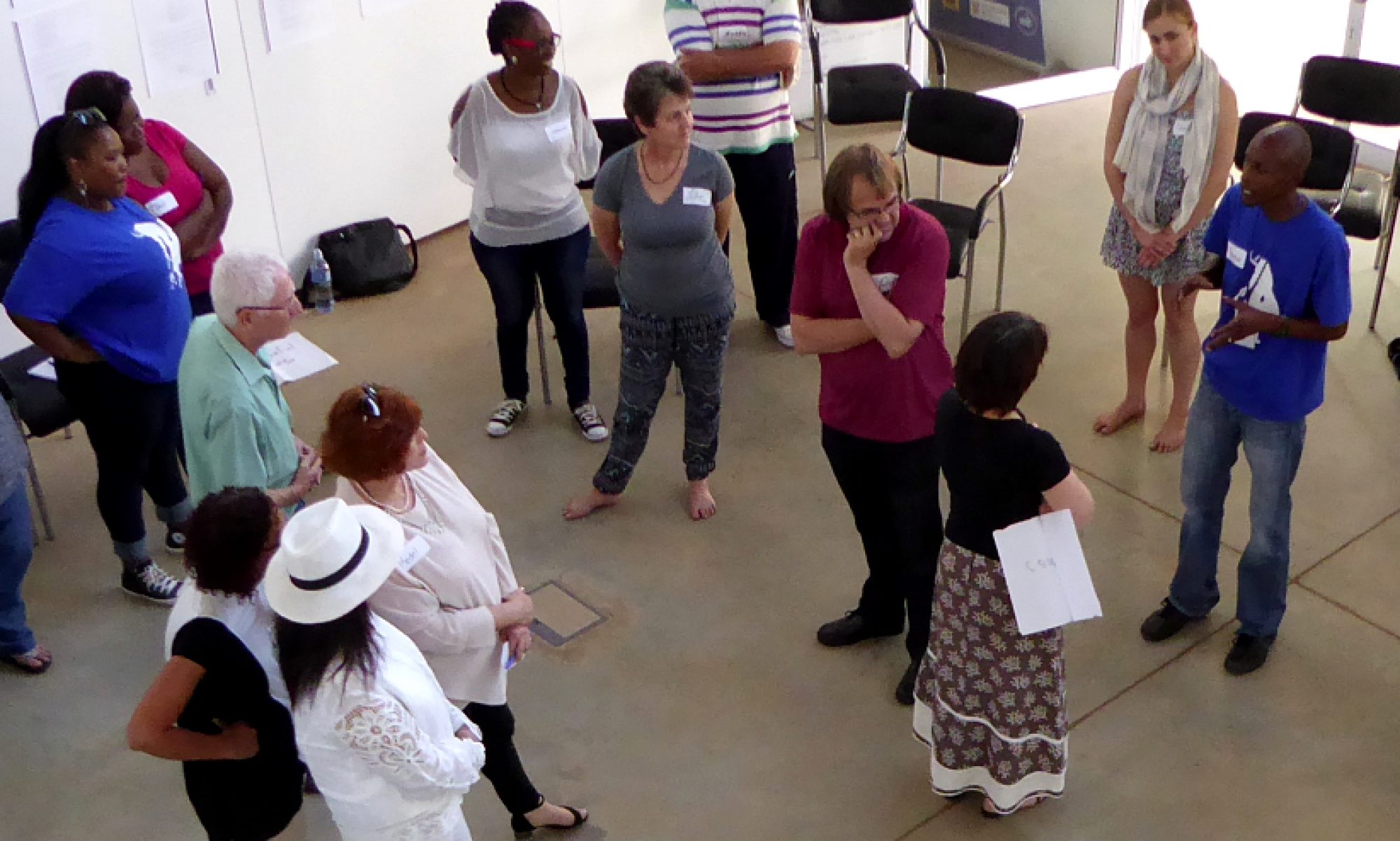The improvisational mindset is rooted in an open and flexible attitude, based on a set of fundamental principles that are learned through engaging in improvisational games and activities.
For a quick overview of the most important improvisation principles that can help you navigate uncertainty and act with confidence amidst emergence, complexity and collaborative projects, check out Raymond Van Driel’s P.L.A.Y.! model below.
In the mean time, if you are coming to the Applied Improvisation Network’s annual conference; we will be working with Raymond to present to you a three day Train the Trainer workshop so you too can add more interaction, creativity and ZING when you train and facilitate.
Raymond’ s P.L.A.Y.! model
P.L.A.Y.! builds capacity for staying focused while remaining open to choices in order to maximize results in crisis situations.
- ‘P’ stands for Presence. This refers to being in the ‘here and now’ and being aware of everything that happens around you. Akin to mindfulness, it replaces distraction and fragmentation with keen and clear focus. Where are you now? What is happening around you? What do your senses tell you about the present surroundings? How do you fit in? Anxiety and stress can reduce our ability to focus and see choices. When we feel stuck and anxious, it’s easy to lose perspective and shut down, missing a lot of what is going on around us. By noticing more, we have more inner and outer resources available to us and we open channels to new ways of responding.
- ‘L’ stands for Leaping Into. Sometimes we have to begin a project or a task without planning all the required steps beforehand. Sometimes circumstances demand that we begin before we are ready, and adapt as the situation requires. This is particularly important if we don’t have all the information we need or want or if the situation is rapidly changing. ‘L’ also stands for Letting Go. Things don’t always go the way we’d like or expect. Sometimes we need to let go: of our attachment to being right, of our need to be in control, of our preconceived notion of how things should be. Rigidity and need for control are often fallback response to stressful situations. Flexibility can often be far more useful.
- ‘A’ stands for Accept and Adapt. This is about accepting offers – seeing opportunities in what others say and do and allowing ourselves to be changed by circumstances, others’ opinions and new situations. Rather than being defensive and blocking, we receive others’ input, engagement, and participation. This doesn’t mean we have to agree with others when we disagree with them, but we can look for ways to acknowledge and build on what they bring. This may not come naturally or easily – people often do not welcome difference or change, even when it’s positive. So this element speaks to overcoming initial restraints and resistance to change and really accepting and adapting to whatever crosses your path. When dealing with complexity it helps to be able to include diverse perspectives and approaches and integrate accordingly.
- ‘Y’ stands for Yes, And… This reinforces the acceptance described above (“yes”), while adding to and building on that (“and …”). This is in contrast with “Yes, but …”- behavior, where we tend to focus on why something will not work. With “Yes, and” behavior we see more constructive collaboration, more energy, more flow and more options. This also switches focus away from a problem focus and towards a solutions focus. It prevents premature discarding of valuable ideas by creating room to explore them further.
- ‘!’ refers to Impact. This refers to implementing the four principles above in a convincing and bold manner in order to achieve maximum effect. Commitment, confidence and clarity are qualities that emerge through practicing and using these improvisation activities.
Catch Playing Mantis and Raymond van Driel at the Applied Improvisatio Network’s annual conference in Austin Texas!!
For train the trainer workshops in South Africa, click here.
OR contact Petro in Johannesburg, Burgert in Cape Town and Raymond in the Netherlands.
For more info on The Applied Improvisation Network Click here.
For more info on the AIN conference Train the trainer workshop Click here.
Above model taken from: Tint, B, McWaters, V and Van Driel, R. (2014) Applied Improvisation Training For Disaster Readiness and Response: Preparing Humanitarian Workers and Communities for the Unexpected. Journal of Humanitarian Logistics and Supply Chain Management 4: (forthcoming


This is great stuff. Concise and Accurate!
Ruthie
Hope you don’t mind if I pass this on to fellow improvisers.
Hi Ruthie
Not at all. Share the love.
This is great! Do you have suggestions about improv activities I could use to illustrate part of your model? i.e. one activity for P? one for L etc.
I’m thinking about using your model to explain what applied improv is at an upcoming conference.
Hi Vanessa
Yes, Hear are links to some games to illustrate the model:
P http://www.playingmantis.net/walking-exercise/
http://www.playingmantis.net/presence-exercise-1-2-3/
L http://www.playingmantis.net/810/
A, Y, ! http://www.playingmantis.net/%E2%80%9Cyes-and%E2%80%9D-exercise/
http://www.playingmantis.net/yes-and-story/
http://www.playingmantis.net/yes-lets/
If you want some clarification or want to bounce of some ideas we can have a skype chat.
Hope it goes well with your conference.